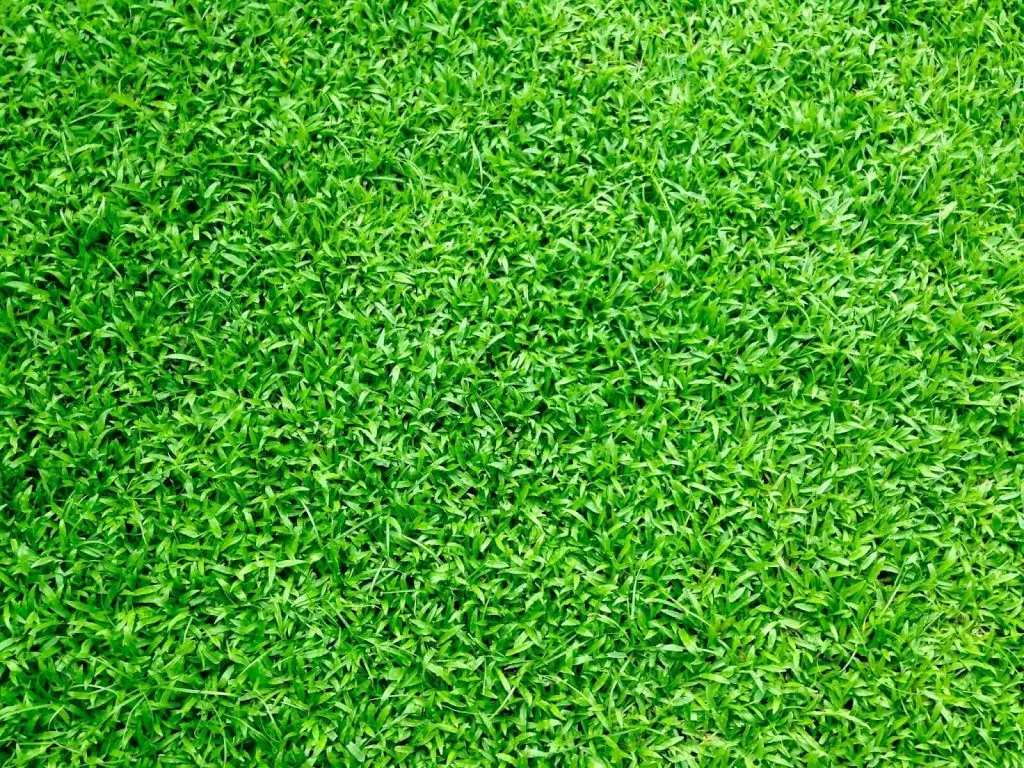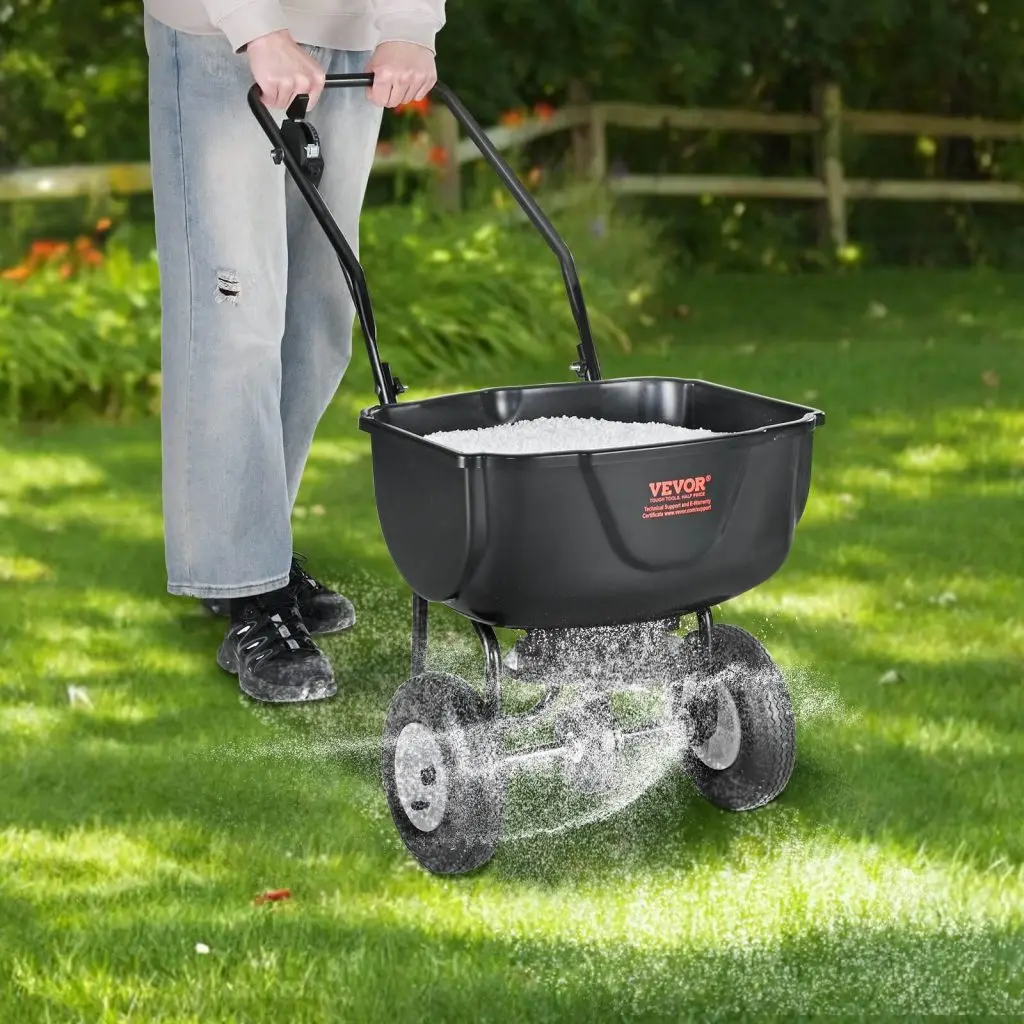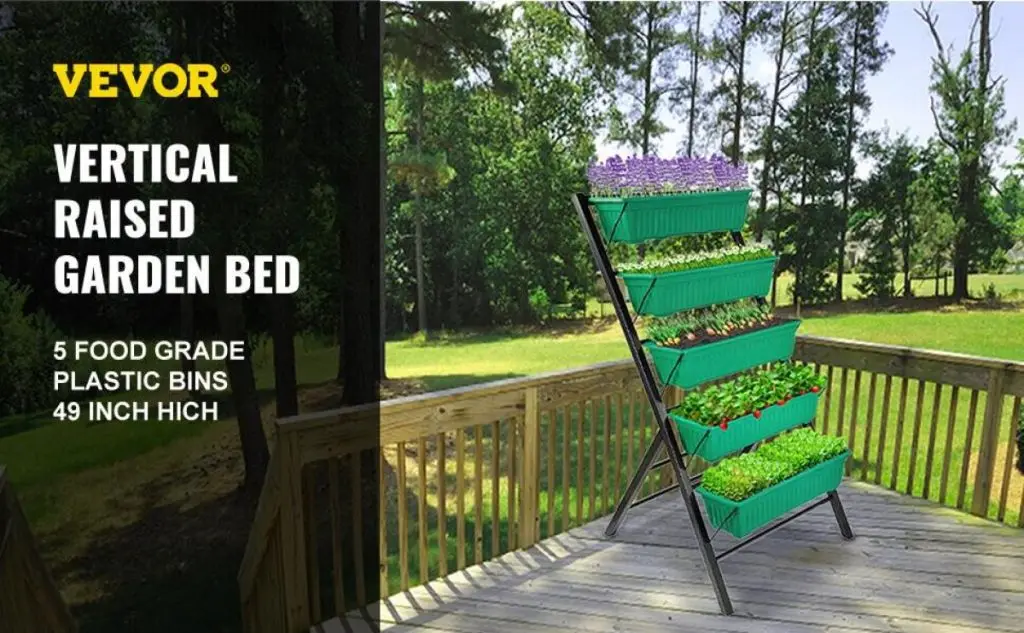Maintaining a healthy lawn requires adequate attention and care, which includes fertilization. However, knowing when to fertilize your lawn or how to apply fertilizer effectively is a challenge for many homeowners. Meanwhile, some homeowners aren’t even sure whether their lawn is a cool-season lawn or a warm-season lawn.
Knowing when to fertilize your lawn matters. Fertilizing at the right time gives your grass maximum nutrition leading to lush and green grass. Whatever your questions are, whether you’re asking “When do I fertilize my lawn?” or “When to apply fertilizer to my lawn?” This post has got you covered.
Learn how, why, and when to fertilize lawns to ensure a beautiful and lush green lawn this spring in this straightforward guide. We’ve also included common mistakes to avoid and a handy lawn fertilization FAQ section to ready your lawn for a lush green outlook all year long.
Table of contents
- Why Knowing When to Fertilize Your Lawn Matters
- Understanding Different Grass Types
- When to Fertilize Cool-Season Lawns
- When to Fertilize Warm-Season Lawns
- Regional and Climate Considerations
- How to Determine the Best Time to Fertilize Your Lawn
- How to Apply Fertilizer Effectively
- Common Mistakes to Avoid When Fertilizing Your Lawn
- Frequently Asked Questions
- Enhance Your Lawn Care with VEVOR’s Products
Why Knowing When to Fertilize Your Lawn Matters
The moment of the year you fertilize matters. Generally, the best time to fertilize is when your grass is in its active growth phase. To determine this, you want to know your type of grass (because either of the two main turfgrass categories requires unique fertilizing schedules).
Warm-season grasses grow in areas like Southern California. This category of warm-season grasses demonstrates different growing seasons that require different fertilization times. Cool-season grasses, on the other hand, grow in the spring and fall with their largest growth occurring in the fall.
Fertilizing at the right time can help to promote healthy growth and weed prevention as the temperatures rise. It’s also vital to help you get the necessary nutrients for optimal health and resilience against weeds and diseases.
Understanding Different Grass Types
This section explores how to understand different grass types across the two main segments: cool-season grasses and warm-season grasses. The best type of grass for your lawn depends on your climate and other external factors. Let’s check out examples of grasses across either category, their growth patterns, and optimal fertilization times.
Identifying Cool-Season Grasses
The Kentucky Bluegrass is one of the most popular cool-season grasses. Its deep green hue and delicate texture give it a picturesque appeal that has made it a star feature in many home’s outdoor arenas. If you love a lawn that combines beauty with toughness, the Kentucky Bluegrass is one to check out with its resilient dense carpet form made to withstand heavy foot traffic.
Fescue doesn’t mind the shade and is capable of thriving in cooler climates under the shadow of larger plants and trees. Thanks to their deep roots, Fescues are drought-resistant, making them a go-to for areas that require a mixture of dry and shaded conditions.
Another renowned cool-season grass is the Perennial Ryegrass. Famous for its quick germination phase (5-14 days), the Perennial Ryegrass also adorns with a fine texture and vibrant green color. If you want a quickly growing lawn or need an option to mix with other slower-growing grasses, the Perennial Ryegrass might be the option for you.
Identifying Warm-Season Grasses
Also called the Sun Worshipper, the Bermuda grass thrives under the blazing sun. You’d find it commonly in sports fields and high-traffic areas. Zoysia is another notable warm-season grass. With its dense, plush carpet, Zoysia forms a thick mat that can easily choke out weeds while feeling luxurious underfoot.
Although Zoysia might have a slow growth cycle, its drought resistance and ability to handle both sun and moderate shade make it worth the wait. What if you live in a coastal area, then the St. Augustine Grass can make a dream grass for you.
St. Augustine thrives in the sandy soils and salty air, even in areas where other grasses might fail to grow. That creates broad, flat blades that create a dense shade- and salt-tolerant turfgrass. Next, we review understanding the right time to fertilize cool-season lawns.
When to Fertilize Cool-Season Lawns

You want to fertilize your cool-season lawns during the early spring or late fall. Here’s a helpful guide on why you should fertilize during this season and some other fertilizer application tips.
Early Spring Fertilization
Early spring in cold climates is the best time to apply fertilizer on your lawn. After the snow melts and temperatures begin to rise above freezing temperatures continuously throughout subsequent days and nights for several days, you may begin applying fertilizer from late March until mid-May, just before soil temperatures exceed 21 degrees Celsius.
Consider applying nitrogen-rich fertilizers with additional potassium and phosphorus for two weeks after planting hydroseeds or laying sod to promote the development of stronger roots. Additionally, spring fertilizer application can also provide the grass with the right nutrients necessary to start off to a strong start in the growing period.
Late Fall Fertilization
Late Fall is the most essential time to fertilize lawns to prepare the grasses for winter dormancy. Applying fertilizer during this period (from late September to mid-November) can encourage strong root growth and better grass care. Consider fast-release organic products that contain sufficient potassium, phosphorus, and nitrogen to give your lawn vital nutrition for the long haul.
When to Fertilize Warm-Season Lawns
Here’s where to master when to apply fertilizer to lawns for warm seasons for proper turfgrass health. You’ll also find basic guidelines on when to fertilize your lawn for optimal growth.
Late Spring to Early Summer Fertilization
With warm-season lawns, it helps to align fertilization ahead of their active growth periods (mid to late summer). Here’s why fertilizing between late spring and early summer is recommended. Avoid overfertilizing your lawn – regardless of the type of grass in your home.
Mid to Late Summer Considerations
Fertilize sparsely during mid to late summer. Over-fertilization can cause lawn stress turning the grass yellow with possibly crispy grass blades. If possible, avoid fertilization during the peak summer heat to protect your lawn’s optimal health status.
Regional and Climate Considerations
While we may have recommended a few dates, those dates only align with the demands of specific regional weather patterns. Once you understand your region’s local weather or climatic conditions, you can readily adapt your nutrient application schedules to your turfgrass.
Meanwhile, fertilizing your lawn alongside making necessary soil amendments can help to optimize its health and resilience. However, various climates demand different approaches to arrive at optimal results. If you live in a region with acidic soil, like the Southeast, regular applications of lime can help balance the pH levels.
Conversely, regions with alkaline soil like parts of the Southwest could benefit from sulfur amendments. Moreover, understanding your climate’s specific nutrient requirements is vital for effective fertilization.
How to Determine the Best Time to Fertilize Your Lawn
Fertilizing your lawn too often can harm grassroots and leave your lawn scorched. You also don’t want to fertilize your lawn more than twice yearly. However, when do you put fertilizer on your lawn exactly?
Observing Lawn Health
If you were wondering, “When is the best time to fertilize my lawn?” Perhaps the best answer will come when you observe your lawn’s health. The right time to apply fertilizer is when the grass is growing roots rather than blades. When your lawn looks thin, late summer and early fall are typically the best time to feed roots more than leaves.
Usually, your turfgrass shows various nutrient deficiency symptoms like leaf-yellowing and wilting blades, during seasons when they should otherwise demonstrate regular and optimal growth. You want to look out for these symptoms ahead of the application season to prioritize specific nutrients at the right time.
Soil Testing Importance
Talking about nutrient deficiency, an effective soil test can aid in diagnosing your plant problems, ultimately improving the quality of plant production. You could sample at any time. However, test as early as possible before planting where pH adjustments are necessary.
Generally, a soil pH value below 7 depicts an acidic soil while a value above 7 depicts an alkaline soil. At pH 7, the soil is considered “neutral”, Soils generally range from between a pH of 3 to 9. Also, avoid sampling soils that have been fertilized very recently for optimal soil and plant health. Lastly, follow instructional material and guides for specific testing methods.
How to Apply Fertilizer Effectively
Knowing when to fertilize your lawn, or answers to questions like when are the best times to fertilize your lawn, becomes helpful when you apply fertilizer the right way. Here, we explore how to choose the right fertilizer and crucial techniques and practices for even coverage before and after fertilizer application.
Choosing the Right Fertilizer
While there are many types of fertilizer brands, they fall within two categories – synthetic or organic fertilizers. Both types help to increase the levels of nitrogen, phosphorus, and potassium in your lawn.
Synthetic fertilizers could come in granular or liquid forms, typically in N-P-K ratios. Such rations describe the three main nutrients lawn needs found in fertilizers – nitrogen, phosphorus, and potassium. Generally, we recommend a ratio of 3:1:2 or 4:1:2 for both warm-season and cool-season grasses.
Application Techniques
Fertilizers come in granular or liquid forms, each form requiring its unique application technique. If you purchased a granular fertilizer, consider purchasing a hopper or spreader to disperse the nutrients over your lawn. For the liquid fertilizer, you can purchase a sprayer to spray it over all your grass.
Organic fertilizer, on the other hand, is typically mulch (grass clippings that go into your mower bag and often get into the bin). You could mulch your lawn or chop it up into tiny pieces, reapplying it to your lawn as it contains some key nutrients like nitrogen, phosphorus, and potassium for your lawn.
Safety Precautions
Here are some safety tips to heed before, during, and after fertilizing your lawn.
- Execute proper storage: keep fertilizer in a safe place away from pets and children.
- Wear gloves during fertilizer application as dust from fertilizers can pose a tough problem.
- Wear eye protection: avoid direct contact with fertilizer products with skin and eyes. Fertilizers’ corrosive nature can irritate skin, especially where there are cuts or grazes.
- Clean up excess fertilizer on your sidewalk, patio, or driveway to keep fertilizer from running into ponds, streams, or other water sources.
- Disperse granular fertilizer using a spreader, work it into the ground with a rake, and water the lawn as instructed.
Common Mistakes to Avoid When Fertilizing Your Lawn
Overfertilization is one of the most common mistakes homeowners make when nourishing their yards. To prevent this:
- Test the soil always before applying fertilizer to know the right ratio.
- Water plants thoroughly, immediately after applying fertilizer
- Sometimes, it helps to prioritize organic compost to enhance your soil
- If you’re using a liquid fertilizer, add more water than directed to stay on the safer side.
Moreover, you want to avoid improper time when applying fertilizer to your lawn. That’s because applying fertilizers to your turfgrass long before it needs it or delaying application could expose the soil nutrient to potential loss. This is especially the case for nitrogen fertilizers as soils can’t retain nitrogen for long.
Frequently Asked Questions
Here, we answer some of the most common questions users ask about lawn care, when to fertilize if you missed the optimal time, and when to fall fertilize your lawn.
When Do I Fertilize My Lawn If I Miss the Optimal Time?
If you fail to stick to your fertilization schedule, you can fertilize as soon as you remember – except during the summer’s peak heat. If you discover that you’re late in late summer or fall, think about whether your grass would still grow for a few weeks or otherwise, if yes, then go ahead to fertilize. Cool-season grasses require a bit more time in the fall when the lawn’s root system is going through a lot of root growth.
Is It Better to Fertilize Before or After Rain?
Ideally, we recommend applying fertilizer to your lawn after rainfall. However, you want to wait for the grass blades to dry and the puddles on your lawn to sink into the soil. It’s also a good idea to fertilize your grass if it gets sunny a few days after rainfall.
Recommended For Your Project
Enhance Your Lawn Care with VEVOR’s Products
VEVOR’s lawn care products boast of durability, efficiency, and affordability in every piece so you can rest assured of high-quality application. Here’s detailing vital reasons to purchase VEVOR’s lawn care equipment, with the features and benefits of some best-selling products from the brand.
VEVOR’s High-Quality Fertilizer Spreaders

VEVOR’s lawn care equipment offers users tremendous benefits and features, regardless of your lawn type or region. Count on the brand’s high-quality fertilizer spreaders to simplify your fertilizer application process while providing a range of other classy features for literally “half the price.”
Let’s see some top features and benefits you stand to gain when you purchase a high-quality fertilizer spreader from VEVOR like this.
- Generous Capacity: A load-bearing capability of up to 25 lbs and a 15L hopper, primed to cover 5,000 sq. ft at once taking out constant refilling. Excellent for small lawns and spacious yards alike, all-year-round
- Guaranteed Even Seeding: This lets you benefit from the adjustable outlet size, alongside a 30-step infinite adjustment and a trapezoid hopper design that guarantees even and accurate distribution of seeds. Adjust the spreading width (seamlessly from a minimal 0 to a wide 9.8ft) to your needs: the faster you push, the broader the spread.
- Pre-Assembled Components: The core components of this broadcast fertilizer spreader come pre-installed, trimming down the assembly process down to just 4 steps, and speeding up assemblage by 60% to ensure a smooth and efficient setup experience.
- Large Wheels: Robust 8-inch wheels effortlessly handle every bump and dip in your yard. Made of durable plastic, the wheels are skid-resistant to enhance and facilitate easy maneuverability, whether making sharp turns or maintaining a steady course.
- Robust & Long-Lasting: Thanks to a carbon steel frame and powder finish, this spreader is built to guarantee durability and longevity. Rust-resistant, lightweight, and sturdy with the enclosed gearbox shields gear from corrosion and provides hassle-free seeding and fertilizing.
Why Choose VEVOR for Your Lawn Care Needs
VEVOR’s lawn care products demonstrate the brand’s commitment to quality and customer satisfaction. Testimonials and success stories from users who purchased the brand products may better tell the story.
Excellent spreader
“Good sturdy piece of kit, easy to maneuver and nice widespread pattern. Excellent value. Easy to assemble.”
Would definitely recommend
“Works great, product arrived on time. Very pleased with it overall, I would definitely recommend it for treating lawns.”
Excellent Quality
“Excellent quality, easy to assemble works perfect for what I needed would highly recommend to all of the gardeners out there!!”
Feel free to check out the brand’s product page for more reviews from real users.
Conclusion
Fertilizing your lawn at the right time sets your plants up for optimal health. To do this, identify the specific type of turfgrass in your yard to plan for fertilizer application ahead of the plant’s optimal growth period. We recommend implementing these guidelines on when to apply lawn fertilizer to ensure a healthier lawn.
Should you require excellent lawn care products for your yard, look no further than VEVOR’s lawn care product selections for high-quality products with proven testimonials of customer satisfaction. Visit VEVOR’s lawn care product section today to explore its range of offerings and rest assured of a lush green yard all year long.





